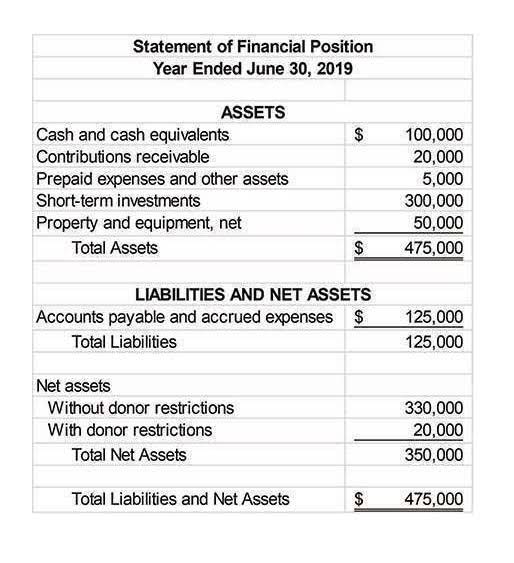
It allows you (and investors) to understand how well your company handles debt and expenses. By summarizing this data, you can see if you are making enough cash to run a sustainable, profitable business. The next step is choosing between a cash or accrual basis for your bookkeeping. This decision will depend on when your business recognizes its revenue and expenses. Before you begin bookkeeping, your business must decide what method you are going to follow. When choosing, consider the volume of daily transactions your business has and the amount of revenue you earn.
Risk of errors

It includes importing and categorizing transactions properly, reconciling these transactions and making sure they’re recorded according to your entry system and accounting method. A journal is a key tool in bookkeeping and can be used to record all transactions. This will help you keep track of your finances and ensure accuracy when recording entries. Because single-entry accounting is the simplest accounting entry method, cash-basis accounting is also the simplest accounting method.

What is the Difference Between Bookkeeping and Accounting?
- For external users, such as investors, financial institutions, and the government, accurate bookkeeping is required so they may make better investment and lending decisions.
- Bookkeepers must organize these transactions into different accounts on a daily basis.
- Cash-based accounting, however, only records transactions when cash changes hands.
- The key is for business owners to choose an approach that aligns directly with the company’s business goals.
- Most sophisticated investors and acquirers expect accrual-based financials that comply with GAAP.
- It tracks a company’s cash position and identifies any potential cash flow statement problems.
Regulatory bodies like the Financial Accounting Standards Board (FASB) in the U.S. set guidelines for financial reporting. Compliance with Generally Accepted Accounting Principles (GAAP) ensures financial statements are comparable across industries, enabling stakeholders to make informed decisions. Publicly traded companies must follow these standards to maintain transparency with shareholders and regulators like the Securities and Exchange Commission (SEC). For businesses with straightforward operations, this approach simplifies tax filing. The IRS allows small businesses with average annual gross receipts under $27 million (as of 2024) to use this method for tax purposes under Section 448 of the Internal Revenue Code.
How to Choose Between Different Bookkeeping Methods: A Guide for Business Owners
This means a purchase order is recorded as revenue even though the funds are not received immediately. The same goes for expenses in that they are recorded even though no payment has been made. There is an array of bookkeeping apps that sync with cloud-based software, ensuring that the data is consistent and securely backed up.
- A Bookkeeper Job Description typically includes the responsibility of managing these non-cash transactions, ensuring all financial records are accurately maintained.
- But regardless of the type or size of business you own, the accounts we list below are the most popular.
- They also provide insights about the company’s overall financial health to business owners and other stakeholders.
- It also enables businesses to identify areas of improvement, track expenses, and make financial projections.
- Since no two businesses are alike, it is very probable that they will desire a custom software solution that is made to meet their unique needs.
- However, businesses must ensure compliance, as improper application can lead to IRS scrutiny.
The information you get from your receipts should go into some kind of ledger (usually a digital option). At the end of each pay period, you’ll calculate the gross pay for each employee (using their payroll information) and then apply any taxes and withholdings. Then, you would record the primary payroll journal entry in your accounting retained earnings software. FreshBooks payroll software powered by Gusto helps make payroll accounting more streamlined and efficient, saving you time and money on this essential process.

Popular solutions like QuickBooks Online provide tools for generating invoices, tracking sales, and creating comprehensive financial reports. Budget-friendly choices such as Zoho Books and Wave offer scalable services for small businesses, sometimes starting from a free tier. Choosing the right bookkeeping bookkeeping methods method depends on your business size, complexity, and growth plans. For businesses looking to save time and reduce errors, outsourcing bookkeeping can offer professional expertise and peace of mind.
Taxation Compliance (TC)

Whether it’s a lack of interest or knowledge, many businesses outsource this process to a professional bookkeeper to ensure accurate and healthy finances all around. The method a company uses to record transactions affects how it measures profitability, tracks expenses, and evaluates financial health. It determines when revenue is recognized, directly impacting reported earnings and financial ratios such as gross and net profit margins. Investors and lenders rely on these figures to assess a company’s stability and growth potential. Service-based businesses with long-term contracts often use a percentage-of-completion approach, a variation of accrual accounting that recognizes revenue based on work completed.

Bookkeeping Systems is a systematic and comprehensive recording of the financial information pertaining to corporate activities. It encompasses both the https://www.bookstime.com/articles/accrued-interest record-keeping and procedural parts of accounting work. When handling books of accounts, bookkeeping can take several forms and be done in a variety of ways.
